
- Aug 26, 2025
Armenia's Top Import Product: Unprocessed Gold – A Strategic Economic Asset
Over the past few years, as per Armenia Import Data by Import Globals, the nation's import and export patterns have undergone considerable changes due to an increased emphasis on industrial development and economic diversification. Strategic imports are now essential to bolstering domestic sectors and increasing production capacity as Armenia continues to fortify its economic underpinnings.
Unprocessed or semi-manufactured gold is the most popular import into Armenia among the different commodities that enter the nation. As per Armenia Export Data by Import Globals, this development reflects Armenia's larger goal to grow its value-added manufacturing sector, especially in jewelry and metal refining, in addition to the demand for luxury items and precious resources. Therefore, the import of raw gold is a crucial component of Armenia's economic policy as well as an issue of trade.
Armenia's General Economic Indicators
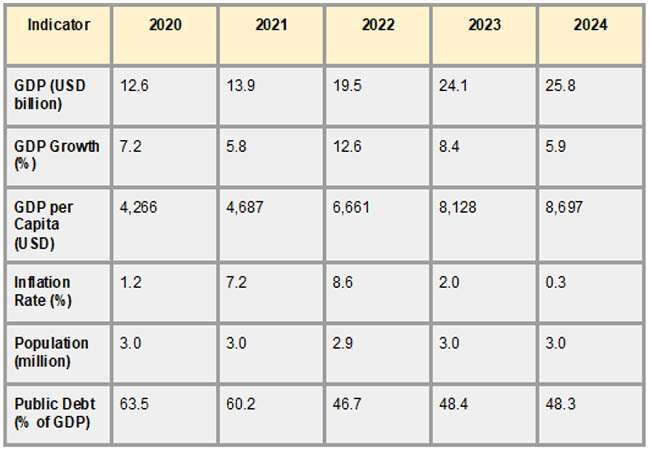
In recent years, as per the Armenia Import Export Trade Data by IMPORT GLOBALS, Armenia's economy has shown development and resilience. The nation's Gross Domestic Product (GDP) increased by 5.9% in 2024 to reach about $25.5 billion. The main drivers of this expansion were an 11% increase in investment and a 6.8% increase in private consumption. Trade accounted for 17% of this growth, followed by real estate (19%), financial services (18%), and construction (14%). However, there was a minor 1% gain in agriculture and an 8.3% contraction in the mining industry.
In 2024, as per Armenia Import Customs Data by Import Globals, Armenia's average annual inflation rate was 0.3%, which was lower than the 2% rate in 2023. A 2% deflation in food costs was mostly responsible for this reduction. The Central Bank changed the policy rate in response to price rises in several sectors at the end of the year, even though overall inflation was low. In terms of labor, the unemployment rate increased from 12.4% in 2024 to 13.9% in 2024. Rising rates of unemployment, which affected both men and women in both urban and rural regions, contributed to this increase.
Unprocessed Gold: Analysis, Importance, and Description
Gold that has not yet been transformed into finished goods like jewelry, coins, or electronics is referred to as unprocessed or semi-manufactured gold. This type of gold, which is commonly sold as bullion, bars, or ingots, maintains its high value and is readily refined or reused to meet industry demands. As per Armenia Import Trade Analysis by Import Globals, Armenia's role in re-exporting to foreign markets is a major factor in the country's dramatic increase in imports of this kind of gold. Instead of being consumed locally, these imports are sent to countries like China, Hong Kong, and the United Arab Emirates via Armenia. As a result, Armenia is now a vital link in the world's gold flows, particularly for Russian gold that is subject to international sanctions.
It is impossible to exaggerate the strategic significance of raw gold for Armenia. In addition to supporting ancillary industries like logistics, refining, and export services, it makes a significant contribution to the nation's trade volume and foreign exchange reserves. As per Armenia Export Data by Import Globals, unprocessed gold made up more than 56% of Armenia's total exports in the first quarter of 2024 alone, which is a startling testament to the country's current economic might. But this also leaves the Armenian economy open to changes in geopolitical alignments, regulatory scrutiny, and volatility in the price of gold globally. Reliance on these high-stakes commodities may be advantageous in the short term, but it requires careful balancing to prevent long-term overdependence and for economic sustainability.
Armenia's Gold Import Data
Between 2020 and 2024, as per Armenia Import Data by Import Globals, Armenia's gold import situation changed dramatically, turning the nation into a major hub in the regional gold trade. About 4 tons of gold worth $200 million were imported by Armenia from Russia in 2020. In 2023, this quantity increased to 17 tons, valued at $1 billion, and by the first half of 2024, imports had reached 66 tons, valued at almost $4.4 billion. Interestingly, almost all of this gold came from Russia, demonstrating Armenia's vital role in allowing Russian gold to flow despite international sanctions.
Armenia's re-export operations are directly related to the notable rise in gold imports. As per Armenia Import Trade Statistics by Import Globals, about 59 tons of gold worth $4.1 billion were shipped by Armenia in 2023, mostly to the United Arab Emirates, with smaller amounts going to China and Hong Kong. In addition to supporting Armenia's trade statistics, this re-export model has highlighted the country's growing significance as a gateway for Russian gold to international markets.
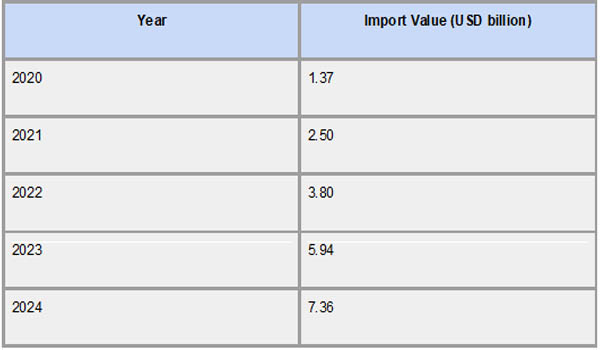
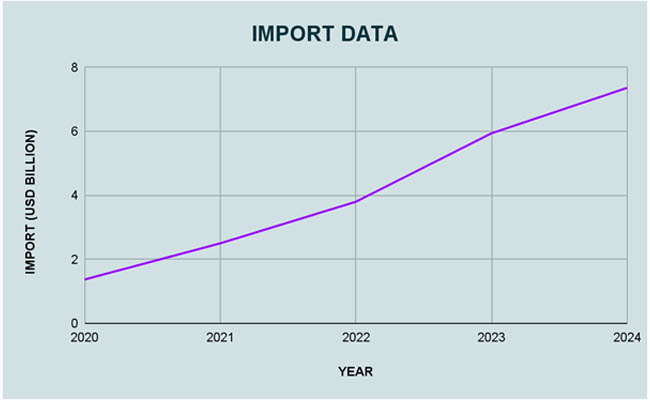
As per Armenia Import Shipment Data by Import Globals, Armenia's economy has been significantly impacted by this spike in the gold trade. Unprocessed or semi-processed gold made up 56% of the nation's $2.5 billion in total exports in the first quarter of 2024, a 12.78-fold increase over the same time the year before. This sharp increase demonstrates how important gold is to Armenia's export mix and how much it contributes to economic expansion.
But this quick growth has also sparked questions about the long-term viability and openness of Armenia's gold trading operations. Concerns regarding the long-term effects on Armenia's economic stability and ties with foreign trading partners have been raised by the country's reliance on re-exporting Russian gold, particularly in light of international sanctions. The future of the nation's gold trade will probably rest on how well it manages these intricacies, striking a balance between international expectations, regulatory compliance, and economic prospects.
Major Import Partners for Armenia
In 2024, Armenia's import situation was mostly influenced by its trading connections with a small number of nations. As per Armenia Import Export Trade Analysis by Import Globals, with a contribution of around $9.43 billion in products, a 2.1-fold increase from the previous year, Russia continued to be the top import partner. China came in second with $1.18 billion in imports, a 24.2% increase from the previous year. Iran and Georgia both made substantial contributions, with imports totaling $639.7 million and $785.7 million, respectively. The fact that these four nations together accounted for more than 70% of Armenia's imports highlights how dependent the nation is on these important trading partners.
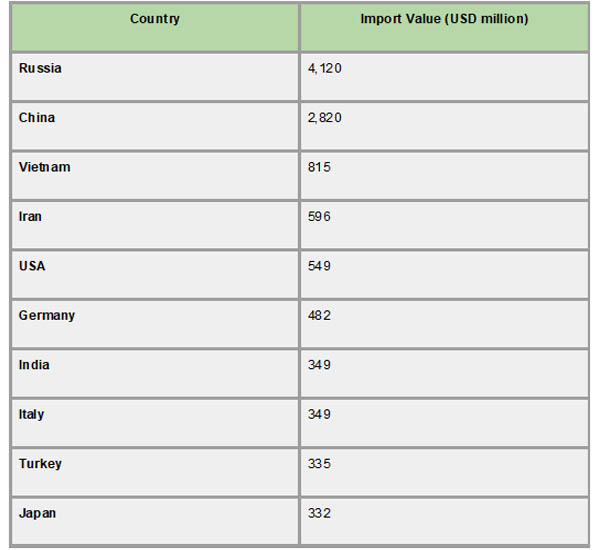
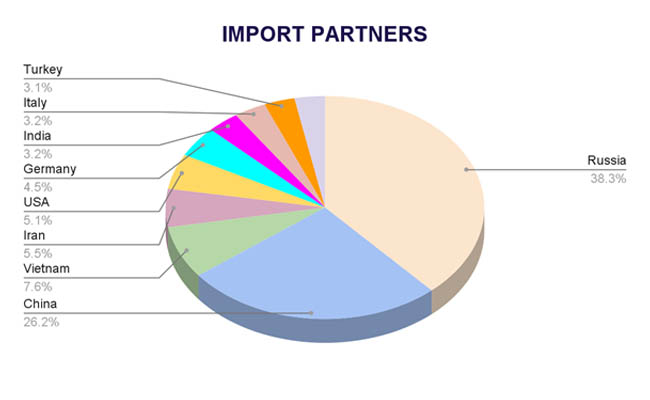
Key Insights
Trade Dynamics: Armenia's strategy of adding value by processing and re-exporting completed items is strongly related to the substantial import of unprocessed gold.
Economic Strategy: Armenia seeks to strengthen its industrial capacities and economic resilience by concentrating on importing raw materials and exporting completed goods.
Diversification: Although gold is still one of Armenia's top imports, the country also imports technological devices, machinery, and automobiles.
Strategic Implications And Predictions
As per Armenia Export Import Global Trade Data by Import Globals, there are substantial strategic ramifications to Armenia's sharp increase in gold imports, mostly raw or semi-manufactured gold. Armenia has established a niche for itself in the world economic scene by establishing itself as a center for re-exporting, especially gold of Russian provenance, in the face of international sanctions. This function has temporarily increased its export numbers, improved foreign exchange reserves, and generated jobs in associated sectors like transportation and processing. But this reliance on a single commodity and supply nation makes it more susceptible to outside geopolitical influences, particularly from Western countries keeping an eye on sanctions compliance. If more inspections or limits are put in place, Armenia's excessive exposure to Russia may endanger international relations and long-term commercial stability.
To lessen its excessive reliance on gold and any one country, Armenia is probably going to concentrate on diversifying its trading approach in the future. As per Armenia Import Export Global Data by Import Globals, trade resilience may be improved by fortifying bilateral pacts with nations such as the United Arab Emirates, China, and EU members. According to economists, Armenia might invest more in value-added gold production and refining to boost its local profit margins. Additionally, if Armenia wants to sustain its expanding influence in the precious metals trade without drawing regulatory criticism, transparency reforms and enhanced trade control frameworks are anticipated to become essential. Overall, even though Armenia has benefited temporarily from the gold import surge, diversification, modernization, and strategic thinking will be necessary for long-term economic success.
Conclusion
An important change in Armenia's trade dynamics and economic strategy can be seen in the country's emergence as a significant importer and re-exporter of raw gold. Armenia's export revenue and international recognition have been greatly enhanced by this gold-centric trade, but it also exposes the nation to economic concentration and geopolitical threats. A balanced strategy based on international cooperation, diversity, and transparency will be crucial for long-term stability and sustainable progress as Armenia negotiates the benefits and challenges of this changing position.
If you are looking for detailed and up-to-date Armenia Export Data, You Can Contact Import Globals.
FAQs
Que. Why does Armenia import large quantities of unprocessed gold?
Ans. Armenia imports unprocessed gold to support its domestic industries, particularly jewelry manufacturing, which adds value and contributes to exports.
Que. How does the import of gold affect Armenia's economy?
Ans. While gold imports represent a significant expenditure, the processing and re-exporting of gold products help generate revenue, support employment, and stimulate industrial growth.
Que. Who are Armenia's main trading partners for gold imports?
Ans. Armenia primarily imports gold from countries like Russia, China, and Vietnam, which are also among its top overall import partners.
Que. Has the value of gold imports increased over the years?
Ans. Yes, the value of Armenia's gold imports has seen a steady increase from $1.37 billion in 2020 to $7.36 billion in 2024.
Que. What measures does Armenia take to balance its trade deficit caused by high gold imports?
Ans. Armenia focuses on processing imported gold into high-value products for export, thereby generating revenue to offset the trade deficit.
Que. Where to obtain detailed Armenia Import Data?
Ans. Visit www.importglobals.com or email info@importglobals.com for more information on up-to-date Armenia Import Data.
